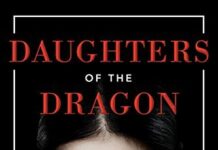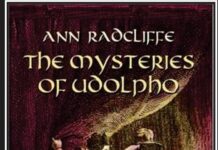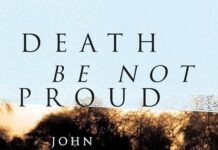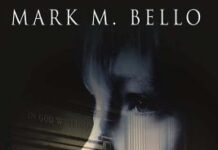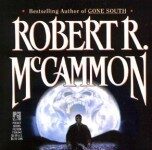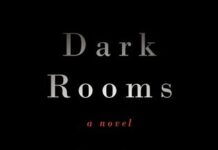In the realm where folklore intertwines with fantasy, Naomi Novik’s Spinning Silver emerges as a luminous tapestry woven with threads of magic, myth, and moral complexity. Revisiting familiar fairy tale motifs, Novik crafts a narrative that is at once enchanting and thought-provoking, inviting readers to explore the shadows and light that dance within her story. This review seeks to unravel the layers of Spinning Silver, examining how the novel spins its spell through richly drawn characters, atmospheric prose, and a fresh reimagining of age-old tales.
Exploring the Intricate Blend of Slavic Folklore and Fantasy elements in Spinning Silver
Naomi Novik masterfully intertwines the rich tapestry of Slavic folklore with the expansive realm of fantasy, crafting a world that feels both timeless and enchantingly fresh. The novel draws upon ancient myths and archetypes-like the relentless Winter King, shape-shifting beings, and mystical bargains-to create a narrative steeped in cultural resonance yet unbound by strict tradition. These elements are not mere adornments but serve as the heartbeat of the story, offering readers a glimpse into the deep-rooted fears, hopes, and wisdom passed down through generations. Through a deft blend of familiar folklore motifs and inventive magical concepts, Novik invites readers to explore themes of power, change, and resilience in ways that challenge and illuminate.
What stands out in this synthesis is how folklore is not just a background but a living force that interacts dynamically with the novel’s fantasy elements. As a notable example, the protagonist’s connection to silver-an vital motif in Eastern European legends-acts as both a literal and symbolic conduit of magic and destiny. The interplay between human characters and the mythical creatures they encounter is nuanced, revealing complex moral and cultural layers rather than simplistic good-versus-evil dichotomies. Below is a glimpse of key Slavic folklore motifs and their fantasy reinterpretations in Spinning Silver:
- Winter King: Represents the merciless, cyclical power of winter, reimagined as a multifaceted antagonist.
- Shape-shifting: Explores identity and transformation beyond physicality, blurring lines between human and otherworldly.
- Silver: Symbolizes value, protection, and tragedy, central to both magical contracts and character arcs.
- Fateful bargains: Echo the perilous nature of deals with the supernatural, steeped in moral complexity.
| Folklore Motif | Fantasy Element | Narrative role |
|---|---|---|
| Winter King | Shifting Power and Threat | antagonist embodying nature’s harshness |
| Silver | Magical Currency and Connection | Source of power and character destiny |
| shape-shifting | Fluid Identity and Magic | Challenge to perceptions of self |
| Fateful Bargains | Consequences and Moral Depth | Driving force for plot tension |
Unpacking the complex Female Protagonists and Their Roles in Shaping the Narrative arc
Novik crafts her female protagonists with a rich complexity that defies traditional archetypes,transforming them into both architects and catalysts of the story’s progression. Each woman in Spinning Silver embodies a unique blend of strength, vulnerability, and cunning, which drives not onyl their personal journeys but also the shifting dynamics of the world around them. Their motivations are never one-dimensional; rather, they reflect the nuanced struggles of identity, power, and sacrifice. This depth allows readers to witness the narrative unfold through multiple lenses, each perspective adding layers of tension and enchantment that elevate the fairy tale foundation into a profound exploration of agency and resilience.
Beyond their individual roles, these protagonists collectively shape the thematic currents of the novel, revealing key motifs that resonate throughout the story:
- Transformation: Personal growth mirrored in mystical and real-world shifts.
- Power & Responsibility: The balance between wielding influence and the cost it exacts.
- Interconnected Fates: How choices ripple through intertwined lives and destinies.
| Protagonist | Key trait | Narrative Role |
|---|---|---|
| Miryem | Resilience | Defies expectations to redefine strength |
| Wanda | Courage | embodies hope and empathy in face of darkness |
| Irina | Determination | Challenges societal norms to forge new paths |
The Craft of World-building: How Naomi Novik creates a Vivid and Immersive Storytelling Landscape
Naomi Novik’s storytelling transcends mere narrative by meticulously weaving together elements of folklore, history, and fantasy to create layered worlds that feel both timeless and immediate. Her attention to cultural detail invites readers into settings where every stone, river, and shadow hums with purpose, fostering a palpable atmosphere of enchantment. This depth is achieved not through overwhelming exposition but through a careful balance of vivid imagery and nuanced character interaction,which embeds the reader deeply in the landscape’s emotional and mythic resonance.The resulting world is not just a backdrop but an active participant, reflecting the themes of transformation and resilience that pulse through the story.
one of Novik’s masterstrokes lies in her use of mythical motifs reinterpreted with fresh sensibilities, seamlessly blending the familiar with the unusual. The structure of her worlds often follows a graceful logic, with nature, magic, and society intertwined in complex, often unpredictable ways. Below is a simple breakdown of key world-building components that contribute to the immersive experience:
- Ecological Realism: Flora and fauna are intricately tied to magic systems and cultural practices, enriching the habitat with symbolism.
- Social Hierarchies: Nuanced class dynamics and folklore-based traditions shape characters’ motivations and obstacles.
- Magical Logic: Magic follows a consistent, believable set of rules, avoiding deus ex machina pitfalls.
- Historical Echoes: Inspirations from Eastern European tales and history add authenticity without restricting imagination.
Themes of Power, Wealth, and Transformation Interwoven in the Novel’s Mythic Framework
Within Spinning Silver, the elements of power, wealth, and transformation are not mere narrative devices but pulsate at the very heart of the mythic tapestry Novik weaves. Power manifests in varied forms-from the sharp intellect of Miryem, who redefines what it means to wield financial control, to the enigmatic might of the Staryk king, whose dominion over ice is both a blessing and a curse. Wealth, traditionally symbolizing material gain, hear carries a deeper resonance, illustrating the precarious balance between prosperity and greed. This duality challenges characters and readers alike to reconsider the true cost of affluence within a frozen,magical realm where every gain echoes with potential loss.
the novel also thrives on transformation,both literal and figurative,as characters evolve against the rigid structures of their worlds. Novik’s mythic framework elegantly intertwines these themes through a cast whose journeys reflect the fluidity of identity and the struggles for autonomy.The interplay of old legends and new mythos crafts a liminal space where change is inevitable, and no form is permanent. Consider this brief breakdown of thematic intersections:
| Theme | Symbolism | Character Reflection |
|---|---|---|
| Power | ice as control & fragility | miryem’s business acumen; Staryk’s rule |
| Wealth | Silver and gold’s double-edged nature | Village prosperity vs.moral cost |
| Transformation | Shape-shifting & personal growth | Ylva’s journey; Miryem’s resilience |
analyzing Novik’s Narrative Style and Its Impact on the Pacing and Emotional Depth of the Story
Novik’s narrative style intertwines lyrical prose with crisp, evocative descriptions that breathe life into every scene, creating a rhythm that carries readers effortlessly through the tale. Her ability to balance poetic language with moments of stark clarity ensures that pacing never feels rushed or lethargic but strikes a harmonious cadence. This ebb and flow mirrors the characters’ emotional journeys, allowing readers to linger on moments of introspection while charging forward through suspenseful and climactic sequences. The result is a story that feels both immersive and dynamic, where every sentence serves the dual purpose of deepening the world-building and propelling the plot.
Key elements of Novik’s narrative style include:
- Rich sensory details that anchor the fantastical elements in tangible reality
- Shifting perspectives that offer multifaceted insights into character motives
- A measured pacing that leverages pauses and quiet moments to enhance tension
- Subtle foreshadowing woven seamlessly into dialog and setting
| Aspect | effect on Story | Reader Experience |
|---|---|---|
| Descriptive Language | Enhances vivid imagery | Heightened immersion |
| variable Sentence length | Controls pacing rhythm | Balanced tension and relief |
| Multiple Perspectives | expands narrative depth | Complex emotional engagement |
| Slow Build-Up | Amplifies climax impact | Deepened suspense |
The Role of Magic as Both a Blessing and a curse in the Character’s Interwoven Destinies
Magic in Spinning Silver serves as a double-edged thread, intricately woven through the lives of the characters, shaping their fates with both hope and ruin. It is neither wholly benevolent nor malevolent,but a powerful force that transforms desire into result. For Miryem, the ability to turn silver into gold is not just a blessing-it is a binding contract with danger, weaving wealth with vulnerability. The narrative deftly explores how this gift elevates her from poverty yet ensnares her within a perilous web of expectation and fear, reminding readers that magic’s true cost is often hidden beneath its shimmer.
Within the tangled destinies of Miryem, Wanda, and the Staryk king, magic becomes a living entity-one that mirrors their deepest hopes and darkest fears. It challenges the characters to confront what they cherish and what they are willing to sacrifice. This dynamic is perfectly captured in the table below, which outlines how magic influences each protagonist’s journey:
| Character | Blessing of Magic | Curse of Magic |
|---|---|---|
| Miryem | Wealth and agency | Threat of exploitation |
| wanda | protection and unexpected strength | Isolation and self-doubt |
| Staryk King | Supernatural rule and charm | Loneliness and restlessness |
Ultimately, Novik’s portrayal of magic bridges the human and the mythical, emphasizing that its influence is a delicate fabric of blessing and burden, forever defining the characters’ complex destinies.
Cultural Significance and Modern Resonance of Traditional Fairy Tale Motifs in the Book
Naomi Novik masterfully revives time-honored fairy tale motifs, threading them throughout Spinning Silver in ways that feel both familiar and startlingly fresh. The book’s rich tapestry of folklore-ranging from the transformative power of silver to the archetypal bargains with fae-is not just homage but a vibrant reimagination that engages with cultural memory.These elements act as a bridge between the ancient and contemporary, showing how stories that once explained the unknown or instilled moral lessons continue to resonate in modern contexts. Novik’s characters embody universal themes of resilience, desire, and consequence, demonstrating that the enchantments of old tales still hold profound meaning today.
Underneath the surface, the narrative invites readers to reconsider the traditional roles and symbols commonly found in fairy tales. as a notable example, the motif of the “spinning maiden” transforms from a passive figure into a complex agent of change. This shift mirrors current conversations about empowerment and identity, reminding us that myths evolve alongside society. Consider the concise table below summarizing some key motifs and their modern reinterpretations in the novel:
| Traditional Motif | Symbolism | Modern Resonance |
|---|---|---|
| Spinning Silver | Transformation & Wealth | Agency & Self-Determination |
| Faerie Bargains | Danger & Contract | Choices & Consequences |
| Winter Fae | coldness & otherworldliness | Alienation & Power |
| Enchanted Forest | Unknown & Testing | Self-Revelation & Growth |
By repurposing these motifs, Novik does more than retell a story; she interrogates the very fabric of myth, illuminating how cultural narratives mold and reflect our collective psyche. spinning Silver thus acts as a mirror, reflecting both the enchantment of folklore and the complexities of our contemporary world.
Recommendations for Readers Who Appreciate Myth-Inspired Fantasy and Intricate Character Development
For those who find themselves enchanted by the delicate dance between ancient myth and imaginative storytelling, the realms Naomi Novik crafts in Spinning Silver offer a rich tapestry of folklore reinvented. Readers who cherish layered narratives and vibrant world-building will delight in how Novik seamlessly integrates Slavic mythology into a fresh, compelling narrative. The novel’s plaited strands of magic and tradition evoke a sense of wonder that lingers long after the final page, making it a treasure trove for anyone seeking fantasy that feels both timeless and uniquely grounded in cultural mythos.
Character complexity is where this novel truly shines-each protagonist is imbued with profound emotional depth and moral ambiguity, inviting readers to explore motivations as twisted and intricate as the enchanted forest paths they traverse. novik’s nuanced portrayal transforms archetypal figures into wholly realized individuals, ensuring that every decision carries weight and every interaction pulses with authenticity. For those who savor stories where characters evolve organically, grappling with their inner darkness and light, Spinning Silver is an unforgettable journey.
- Embrace folklore: Explore other modern retellings like Alice Hoffman’s Practical Magic or Helen Oyeyemi’s Boy, snow, Bird.
- Dive deeper into character studies: Try works such as Neil Gaiman’s Neverwhere or Juliet Marillier’s historical fantasies.
- Expand your mythic horizons: Consider reading Katharine Addison’s The Goblin Emperor for intricate world-building and court intrigue.
| Book | Why It Resonates |
|---|---|
| Uprooted by Naomi Novik | Enchanting blend of Eastern European folklore and strong female leads |
| The Bear and the Nightingale by Katherine Arden | Captivating folklore with atmospheric storytelling |
| Jonathan Strange & Mr Norrell by Susanna Clarke | Rich historical magic with intricate character arcs |
A Thoughtful comparison Between Spinning Silver and Classic Fairy Tale Retellings in Contemporary Literature
Naomi Novik’s Spinning Silver deftly bridges the gap between traditional fairy tale frameworks and the nuanced storytelling prized in contemporary literature. Unlike many classic retellings that strictly adhere to well-worn narrative beats, Novik expands the fairy tale canvas by infusing her story with layered characters who reflect modern complexity and moral ambiguity. The heroine’s journey in Spinning Silver does not merely seek resolution through the typical “happily ever after.” Rather, it crafts an intricate tapestry of transformation where power, sacrifice, and resilience are interwoven, mirroring the multifaceted nature of today’s audience expectations.
Where classic tales frequently enough emphasize clear-cut morality and archetypal roles, Novik’s narrative embraces a refreshing ambiguity that resonates deeply with contemporary readers. This progression is evident in how myth and folklore serve not just as backdrops but dynamic forces that influence character development and plot direction. Consider the elements that distinguish Spinning Silver when set against traditional retellings:
- Complex Female protagonists: Proactive,flawed,and empowered beyond archetypal constraints.
- Subverted Expectations: Stories unfold with unpredictable twists that challenge genre norms.
- Myth as Living Entity: Folklore and magic actively shape societal and emotional landscapes.
| Feature | Classic Fairy Tale | Spinning Silver |
|---|---|---|
| protagonist Characterization |
Often Idealized and Static | Nuanced and Evolving |
| Moral Structure | Clear Good vs Evil | Ambiguous and Complex |
| Role of Myth | Static background | Active Catalyst |
Insights into the Book’s Reception Among Fantasy Aficionados and Literary Critics Alike
Naomi Novik’s Spinning Silver has sparked a rich dialogue across the realms of fantasy enthusiasts and professional critics alike. Among fantasy aficionados, the novel is frequently enough celebrated for its intricate weaving of Slavic folklore with fresh, feminist undertones that invigorate familiar tropes. Readers praise Novik’s ability to breathe life into archetypal characters, presenting them with complex motivations and relatable flaws. This nuanced approach has led to a dedicated fan base that frequently enough cites the book’s atmospheric worldbuilding and morally ambiguous protagonists as standout features. Key highlights from fantasy communities include:
- The poetic integration of mythic elements with a contemporary narrative lens
- The strong, multifaceted female leads challenging traditional fairy tale roles
- A pacing that balances suspense, magic, and emotional depth effectively
Literary critics have echoed many of these sentiments, though their focus tends to delve deeper into the novel’s stylistic and thematic innovations. Reviews published in journals and literary magazines often underscore Novik’s masterful prose and her skillful subversion of fairy tale conventions. The narrative’s exploration of themes such as power, debt, and transformation invites analytical interpretations that enrich its reception beyond typical genre boundaries. The table below summarizes prominent critical perspectives alongside readers’ viewpoints, illustrating the book’s broad appeal and multifaceted impact.
| Aspect | Fantasy Aficionados | Literary Critics |
|---|---|---|
| Worldbuilding | Immersive folklore with rich sensory detail | Symbolic landscapes reflecting internal conflict |
| Characterization | Complex heroes and heroines with depth | Exploration of gender roles and agency |
| narrative Style | Engaging and emotionally resonant | Elegant prose with layered meaning |
| Themes | Magic balanced with human struggle | Power dynamics and mythic reinterpretation |
The Enduring Appeal of Naomi Novik’s Storytelling Craft in Spinning Silver and Beyond
Naomi Novik’s unique ability to intertwine folklore with profound human emotions elevates Spinning Silver beyond mere fantasy. Her storytelling crafts a living,breathing world where traditional fairy tales are not just retold but reborn,rich with cultural textures and unexpected twists. This depth invites readers to navigate complex characters who blur the lines between heroism and vulnerability, making every journey feel intimate and resonant. The narrative pulse beats with a delicate balance of suspense and grace, delivering a reading experience both enchanting and thought-provoking.
At the heart of Novik’s craft lies a meticulous attention to the rhythm of language and the cadence of myth – elements that breathe life into or else familiar motifs. Key aspects that distinguish her work include:
- Layered character development that challenges archetypal roles
- Subversive reinterpretation of folklore themes
- Immersive world-building suffused with cultural authenticity
- Eloquent prose that captures both simplicity and grandeur
| Element | Effect | Example from Spinning Silver |
|---|---|---|
| Character Complexity | Adds moral ambiguity | Miryem’s pragmatic strength |
| Folklore Reinterpretation | Fresh narrative perspective | Silver as a symbol of power |
| Cultural Details | Enhances authenticity | Rich Eastern European setting |
Author Spotlight: Naomi Novik’s Background, Inspirations, and Contributions to the Fantasy Genre
Naomi Novik has carved a distinctive niche in contemporary fantasy through her deft ability to blend folklore with fresh, imaginative storytelling. Raised with a love for Eastern European fairy tales and classical literature, Novik’s background in English literature and philosophy shines through in her richly layered narratives. Her works often explore themes of power, agency, and transformation, drawing inspiration from mythic traditions while challenging and subverting familiar archetypes.This thoughtful approach allows her to create worlds that are as intellectually engaging as they are enchanting, captivating readers who crave depth alongside magic.
Her contributions to the fantasy genre extend beyond simple retellings; Novik’s stories breathe new life into ancient myths by infusing them with contemporary sensibilities. Below is a glance at some of her notable influences and the thematic pillars that define her work:
- Folkloric Roots: Utilizes Slavic and European fairy tales as narrative foundations.
- Strong Protagonists: Features complex female leads with autonomy and resilience.
- Philosophical undertones: explores moral ambiguity and the consequences of choice.
- Magical Realism: Seamlessly integrates supernatural elements with everyday life.
| Aspect | Description |
|---|---|
| Academic Background | English Literature & Philosophy |
| Signature Style | Mythic retellings with a modern twist |
| Notable Works | “Uprooted”, “Spinning Silver”, “Temeraire” series |
| Core Themes | Empowerment, sacrifice, transformation |
Weaving Magic and Myth stands as a testament to the enduring power of storytelling and the intricate artistry behind Naomi Novik’s Spinning Silver. This thoughtful review has unraveled the threads that make the novel both familiar and refreshingly original-where folklore dances with modern sensibilities, and characters shimmer with complexity. Whether you come for the magic, the myth, or the masterful prose, Novik’s tale invites readers to step into a world where every thread is woven with intention and every story is worth spinning anew.





